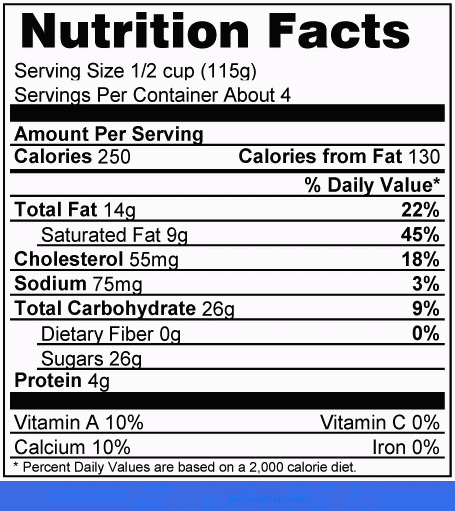A few weeks ago I taught a workshop on reading nutrition labels and I wanted to share some of the major takeaways with you. It always amazes me how tricky food labeling is, but I guess that’s why the marketing folks are paid the big bucks! They don’t want it to be easy because they don’t want you to make smart choices, they want you to make choices that will keep their companies doing well. These 4 tips will set you up to feel more confident when choosing which products to purchase next time you’re at the grocery store.
#1. Ignore the Front of the Package
This is where marketing experts get you. They throw on fun labels like “natural ingredients” “whole grains” “added fiber” “all natural” and “healthy”. Unfortunately, none of these terms are regulated. It’s just marketing. It truly means nothing about the health of the product. A cookie can have added fiber, it doesn’t mean its good for you. And cake can be made with whole grains. It’s just buzz words, plain and simple. The healthiest food you can eat doesn’t come in a package and rarely has a nutrition label, let alone buzz words. Have you ever seen broccoli with a fun label that says “fortified with Vitamin C!”? No, because broccoli is just naturally packed with Vitamin C, and farmers don’t have expensive marketing and branding teams like large companies that make processed foods do. Instead of being sucked in by the front of the package and it’s health claims, flip the package over and find the ingredients list and nutrition information.
#2. Read the Ingredients List
Instead of placing your faith in the messaging from branding experts, start turning over packages and reading the ingredient list. Ingredients are listed in order or their concentration in the food. For example, these are the ingredients for a kind bar:
Mixed nuts (almonds, peanuts, walnuts), chicory root fiber, honey, palm kernel oil, sugar, crisp rice, cocoa powder, non GMO glucose, sea salt, soy lecithin, milk powder, vanilla extract.
The first ingredient is mixed nuts, which means that mixed nuts are the most prominent ingredient in the bar. Vanilla extract is the last ingredient, which means that out of all the ingredients, there is the least amount of vanilla extract. When the first few ingredients listed are junkie, you’re better off skipping the product.
#3. Check out the Servings Per Container
Ever look at the nutrition label for a 16 oz bottle of soda or iced tea? Or even a healthy juice bottle like Odwalla? There are usually two servings per bottle, which means all the nutrition information needs to be doubled if you are drinking the whole bottle (which most of us would do easily). For example, you can see below that a serving size on this nutrition label is 1/2 cup. Right below that information is the servings per container. There are 4 servings in this package. Which means rather that 14g of fat, there are 52 grams of fat. We are trained to think that (most of the time) one package is a serving, but that’s usually not the case. And honestly, many of us will eat everything in a package despite the serving size/servings per container. That’s why this is a super important number to watch for and to use when making decisions about what you purchase.

#4. Look at the Sugar
We all kinda know sugar isn’t that great for us, especially refined sugar and the huge quantities that most people eat nowadays. Sugar is linked to a number of health problems, from diabetes and obesity to other blood sugar issues that can effect energy, productivity, anxiety, and focus. Personally, limiting my sugar intake has been one of the most important things I’ve done to improve my health. But limiting your sugar intake can be harder than it sounds. There is hidden sugar is just about every packaged product. Regardless of whether it’s labeled as healthy, heart healthy, gluten free, high fiber, or even sugar free! That’s why it’s so important to read ingredient lists and nutrition labels (paying extra attention to serving size).
The American Heart Association recommends that women have no more than 6 teaspoons of added sugar per day, and that men have no more than 9 teaspoons of added sugar per day. There are 4 grams of sugar in 1 teaspoon, so for women that’s no more than 24 grams of sugar, and for men it’s 36 grams. Take a look at your breakfast cereal and I bet you you’re consuming close to the recommended limit in just one meal.
Thanks for reading and happy shopping! What do you look for when you are reading nutrition labels? I’d love to hear in the comments below.

Remarkable things here. I am very happy to look your article.
Im thankful for the blog post.Much thanks again. Awesome.